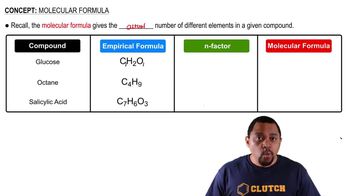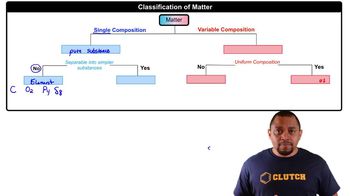Textbook Question
Write the empirical formula corresponding to each of the following molecular formulas: (c) C4H8O2
 Verified step by step guidance
Verified step by step guidance



Write the empirical formula corresponding to each of the following molecular formulas: (c) C4H8O2
Write the empirical formula corresponding to each of the following molecular formulas: (d) P4O10 (e) C6H4Cl2 (f) B3N3H6.
Determine the molecular and empirical formulas of the following: (a) the organic solvent benzene, which has six carbon atoms and six hydrogen atoms
How many hydrogen atoms are in each of the following: (a) C2H5OH? (b) Ca(C2H5COO)2? (c) (NH4)3PO4?
How many of the indicated atoms are represented by each chemical formula: (a) carbon atoms in C4H9COOCH3
How many of the indicated atoms are represented by each chemical formula: (b) oxygen atoms in Ca(ClO3)2 (c) hydrogen atoms in (NH4)2HPO4?